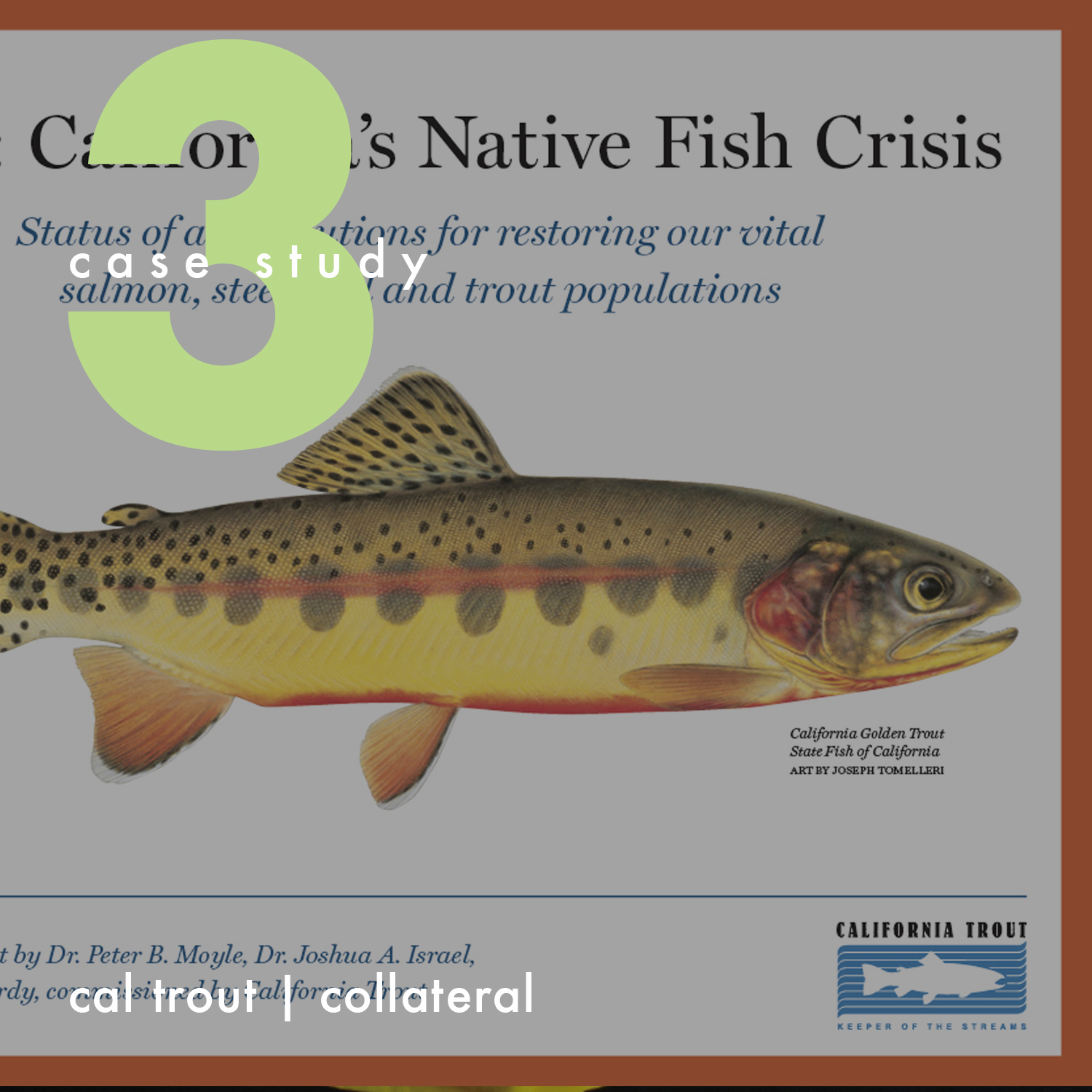> CASE STUDY 3 | COLLATERAL
California Trout
Diversity of California salmon and trout species is among the highest nationally, thanks to the state’s scale, expansiveness and wide range of habitats. California also contains the southernmost runs of salmon and steelhead, which are adapted to the highly variable nature of the state’s climate. From the Sierra Nevada to the Central Valley, to the coastal plains and old growth forests, these fish are part of an amazing natural heritage.
PROBLEM: The bull trout was already extinct in the California, and 65 percent (20) of the 31 remaining species would have become extinct in the state within the next century if the then-current trends continued. Our native salmonids were in steep decline because of increased competition with humans for resources, primarily water. Climate change was also exacerbating the problem because it would ultimately reduce the amount of cold water habitats that our salmonids require. The intent of the project was not to be exhaustive with information, but to present short and poignant cases that distilled knowledge brought forth from the scientific community (Peter Moyle & UC Davis research team). What vehicle could best communicate the plight of California salmonids, global implications, and the urgency of action?
SOLUTION: This field guide provides the status and solutions for restoring salmonid populations in California. It is a multifunctional resource for scientists, policymakers, consumers, and just about any other stakeholder that depends on the vitality of these species (including us). It offers facts and figures relating to each of the species, awareness of the human/animal activities and policies that contributed to the problem in the first place, and provides context through which we can act appropriately. Portability and modular attributes contribute to it being a reliable and valuable quick resource.
RESULTS: In addition to setting the stage with historical background and intent to create impact, the main focus of this publication was about the accounts or snapshots for each of the endangered species. The methods of research culminated in these major reporting elements in the graphical layout: color-coded single score to express overall vulnerability 0 (extinct) to 5 (populations expanding); status criteria by taxon (area, breeding population, environmental tolerance, genetic risk, climate change and research reliability; general watershed in which the species is threatened. While it is uncertain the actual change in status of any species as a direct result of this field guide, one related example of work underway to improve salmon spawning habitat is by The Nature Conservancy at the Nelson Ranch & Big Springs Creek areas in Sisquiyou County (my friends Ada Fowler and Chris Babcock are involved).
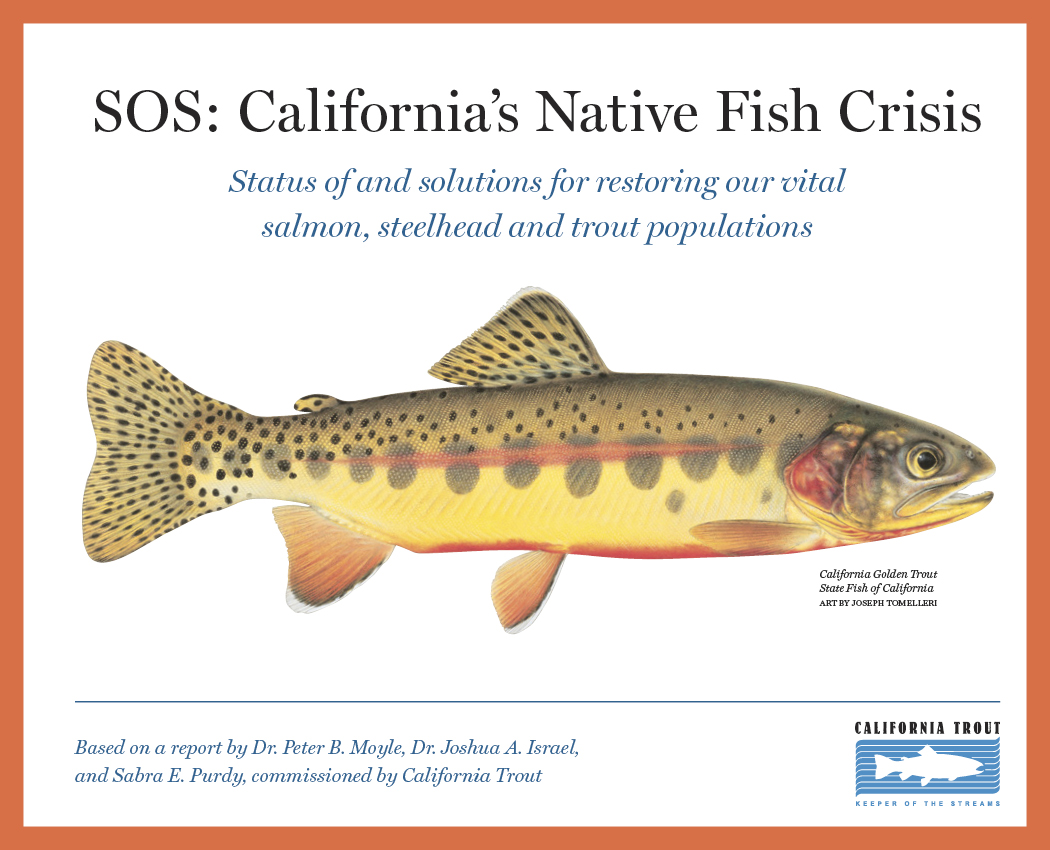
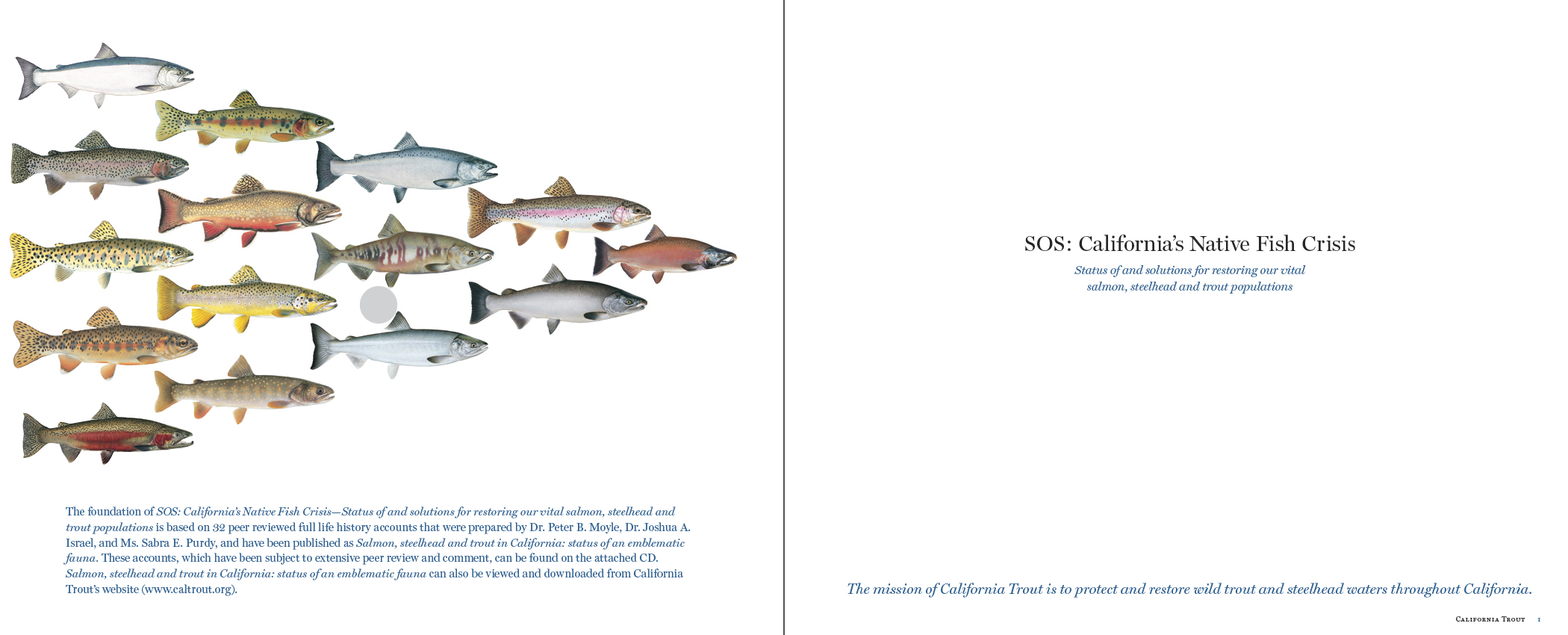
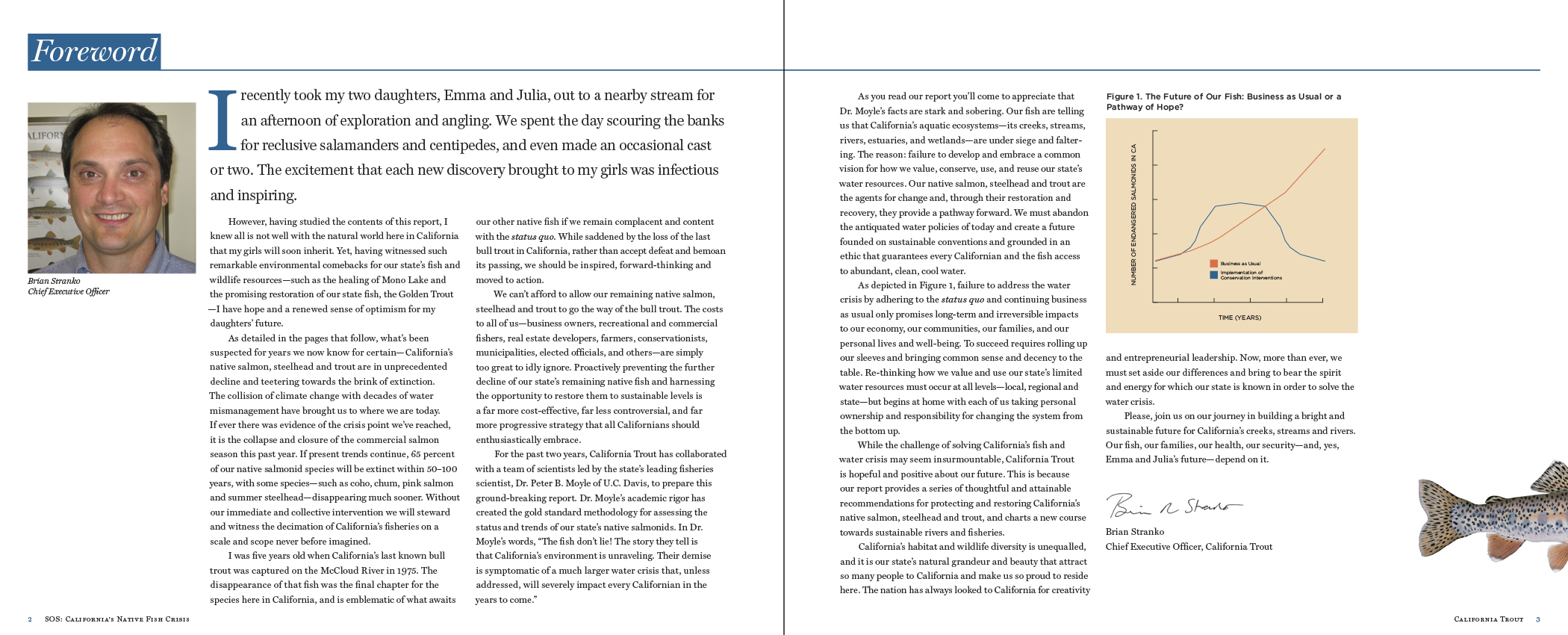
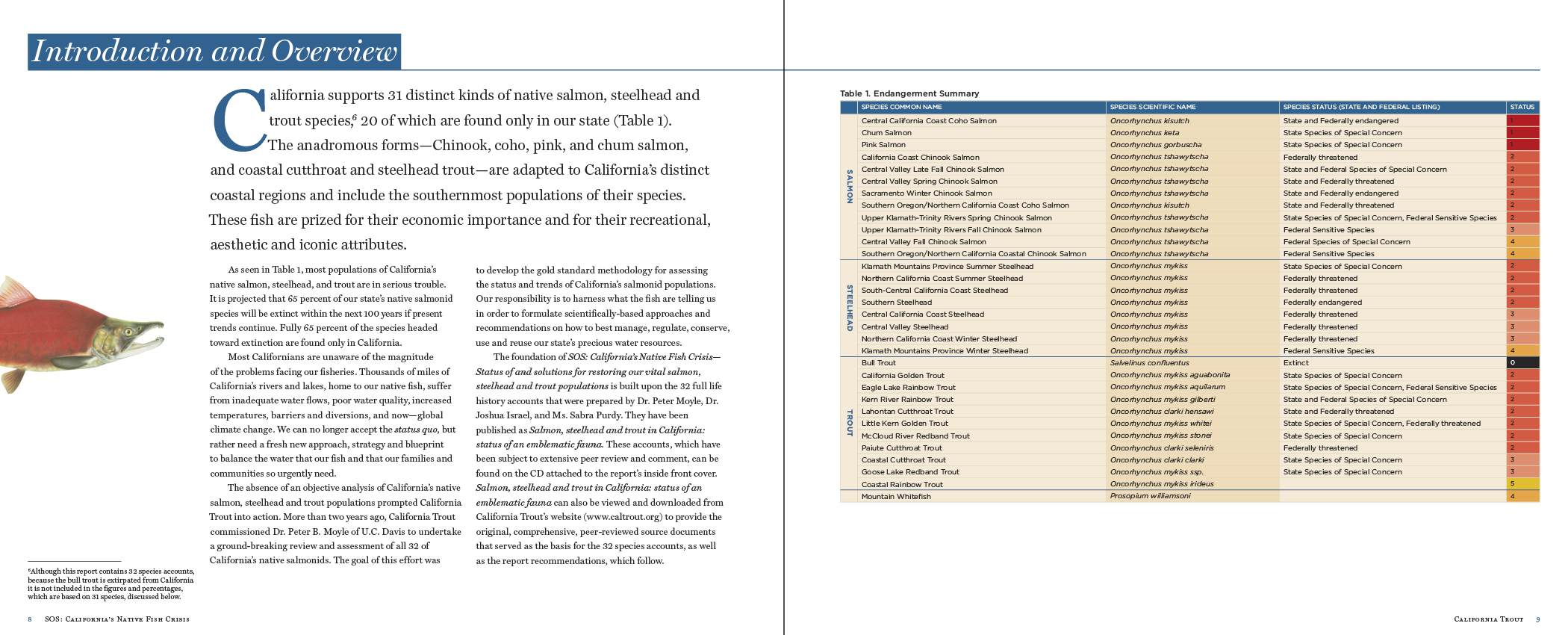
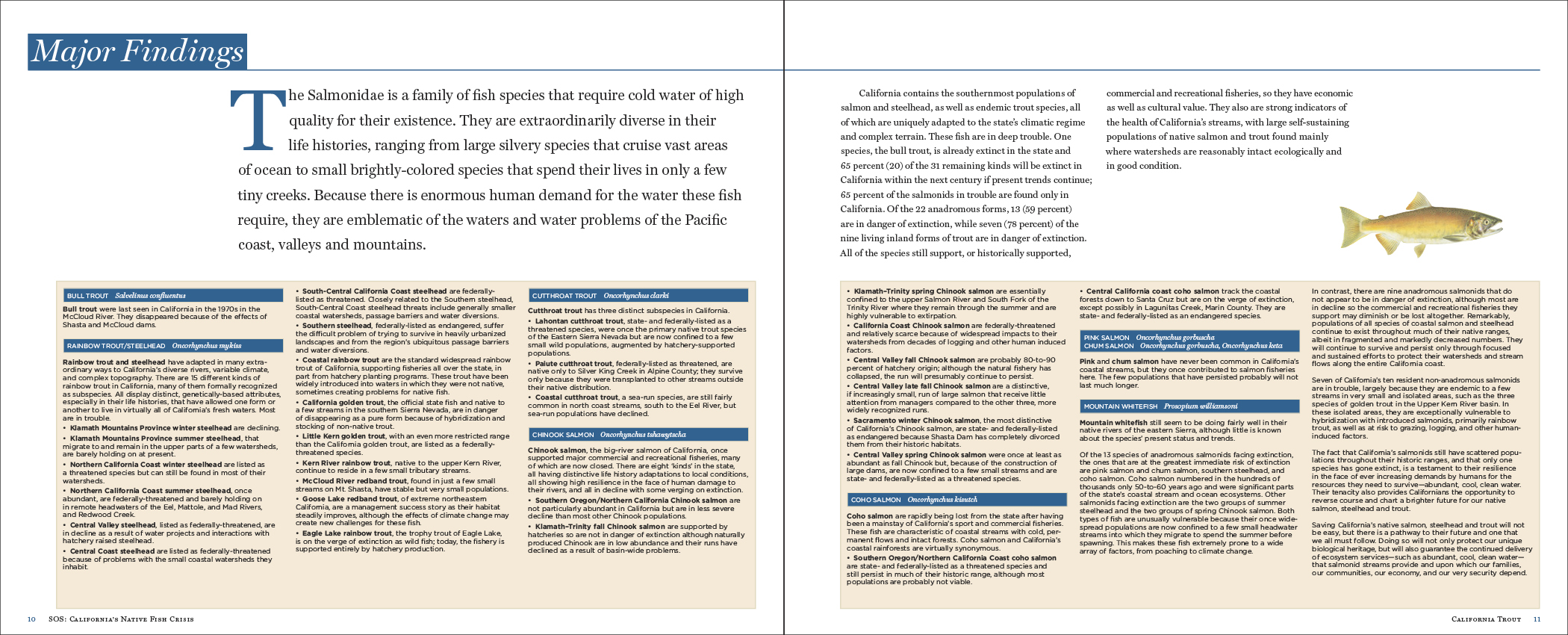
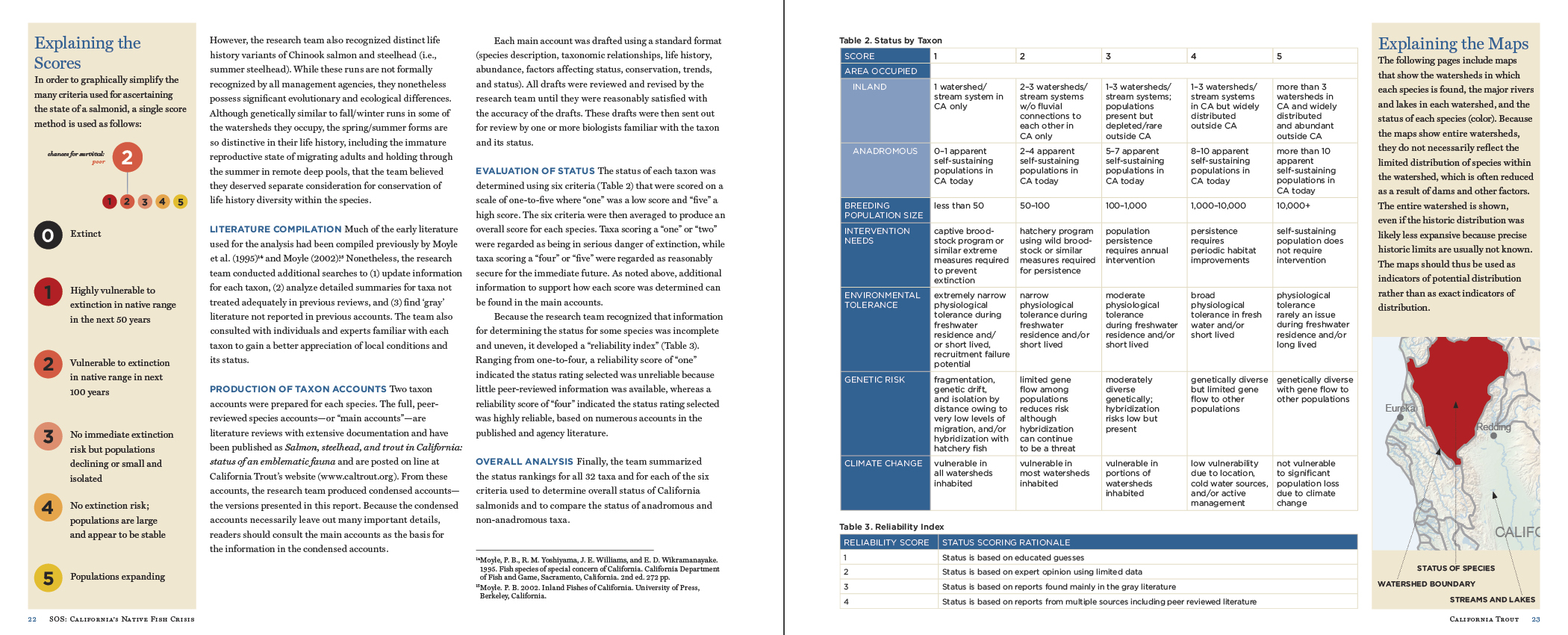
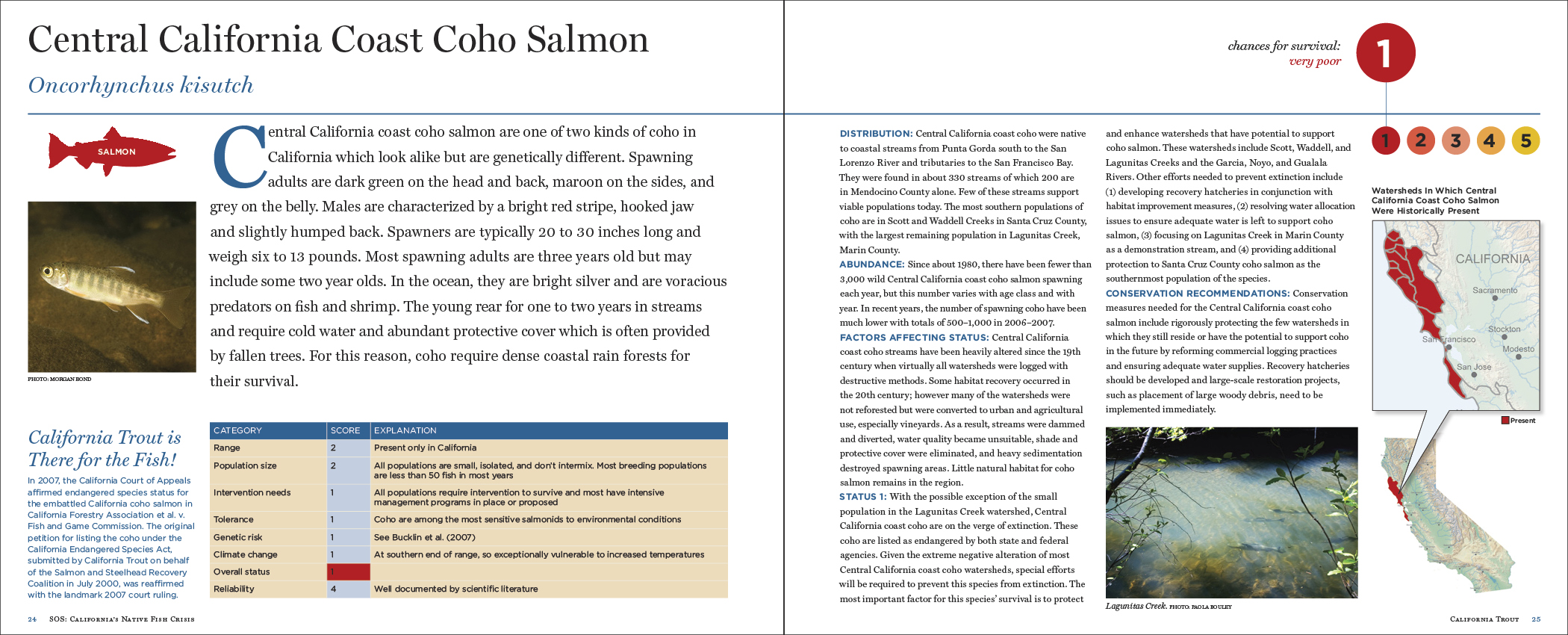
REFLECTION: As the trend toward digital communication has risen, the more scrutinized is the desire for print pieces. However the spiral-bound scientific field guide approach felt appropriate and justified, and the print run was very limited. Making the case for action is best presented with solid data and sound analysis. While jobs and livelihoods are positive outcomes of the fishing industry, keeping realistic tabs on the effects of overfishing and dwindling resources help maintain perspective and help drive prioritization toward better supply chain management and consumer behavior.
PERSONAL ROLE(S): cover, internal design and layout




